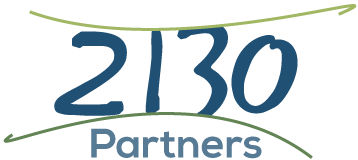We were recently introduced to a great blog called "synthesis" written by Shafeen Charania. (Thanks so much Barbie for the comment on our blog that led us to read synthesis!) In his most recent post, "basest instincts," Shafeen writes about fear at the level of panic. He shines a light on the incredible downside that results from fear driven leadership, whether in society or an organization. He also reminds us how often the resultant sense of panic can be destructive.
If we look back at history it seems that over time, society goes from "terror to terror." Whether the "Red Scare" of communism in the 50s, or more recently Al Qaeda, immigration, and the Bear market -- and even this week, Swine Flu. This got us thinking about the mythology of the "bogeyman." The idea of the bogeyman crosses cultural boundaries and seems to have been around since the Middle Ages. According to Wikipedia, "The bogeyman has no specific appearance, and conceptions of the monster can vary drastically even from household to household within the same community; in many cases he simply has no set appearance in the mind of a child, but is just an amorphous embodiment of terror." This idea of an "amorphous embodiment of terror" is important. It speaks to the power of the imagination, and what happens when fear takes hold because of an idea or possibility and the mind runs with it. We're not saying there's never anything to be afraid of and we're not recommending reckless disregard for safety or consequences. What we are pointing to is that often the level of fear exceeds facts and reality, and there are significant consequences when fear is "driving the bus." There is no doubt that fear can be a motivator. However, the often ignored question is, 'What outcome did we get as a result of fear driving the process? Did we get what we wanted? What were the costs or consequences?'
In light of our proposed "New Rules" it's easy to see that the costs may even be far greater than Shafeen portrays. When fear, or the latest version of "the bogeyman" is in charge, the survival part of our brain takes over, (literally, our neurobiological defense mechanisms kick in), and we are limited to fight, flight, freeze, or appease reactions. That's it. Only four options. Nowhere in that list is the ability to be present, creative, observant, thoughtful or collaborative, and yet these are the very attributes needed to be effective during these challenging times when all the rules have changed and no one knows the new rules yet. Creating and executing from a shared Yonder Star™? Not available to leaders and teams who are driven by fear and focused on survival.
So all of this begs the question - Where is the bogeyman in your life and your business? What bed is he hiding under, or, as portrayed in the Pacific Northwest, what green fog is about to get you?
To dramatically raise your own and your organization's performance, identify and displace "bogeyman thinking" with Vision-Focused Leadership™. Actively collaborate from an orientation of vision versus an orientation of fear and we predict you will experience significant and positive outcomes.
